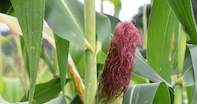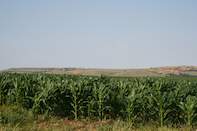Maize was introduced to South Africa in 1655 and has since become one of South Africa’s most important food crops, accounting for roughly two thirds of the country’s commercial area under field crops.

Two types of maize are produced for maize cultivation, namely white and yellow maize. Most of the white maize is used for human consumption, whereas most of the yellow maize is used for animal feed production.
The Free State province is the biggest maize producer, accounting for thirty to forty percent of South Africa’s total production each year. Mpumalanga and North West provinces are the other two big producers. Together, these provinces account for more than eighty-five percent of South Africa’s total production. Yields are generally higher in the eastern than in the drier western parts of the country.
The area planted under maize has varied greatly over the years, reaching a peak of about 4,7 million hectares in 1966/1969. Since then, the area under commercial production has declined steadily, fluctuating between 1,94 million and 2,8 million hectares per year over the past twenty years and averaging between 2,5 to 2,75 million hectares. An additional 350 000 to 500 000 ha are planted by small-scale farmers each year.
Yields, in spite of the decline in production area, has increased, fluctuating between 7,8 million tons and 16,8 million tons per year over the past twenty years, and averaging between ten to twelve million tons over this time.
On a ten year average, maize for human consumption amounts to about 4,1 tons per year, whereas animal feed accounts for roughly 3,9 million tons and the starch and glucose manufacturing industries uses 650 000 tons, according to the Prospectus on the South African Maize Industry. About 1,8 million tons of maize are exported each year, primarily to other African countries.
Production Season
Maize is planted from October to December, after enough rain has fallen to let the seed germinate. There is great variation in planting time between the eastern and western production regions, because of differences in temperatures, rainfall and the duration of the growing season.
It can take anything between 90 to 120 days for maize to grow to its harvest period, depending on the variety and climatic conditions.

Harvest
Maize can be harvested by hand with a sickle, but are harvested with machines on commercial farms where farmers need to harvest hundreds of hectares within a specific time.
Maize is generally left in the field until the moisture percentages reach between 12,5% to 14%, but it can be harvested with a dry matter content of thirty to thirty-eight percent if it will be used to make silage.